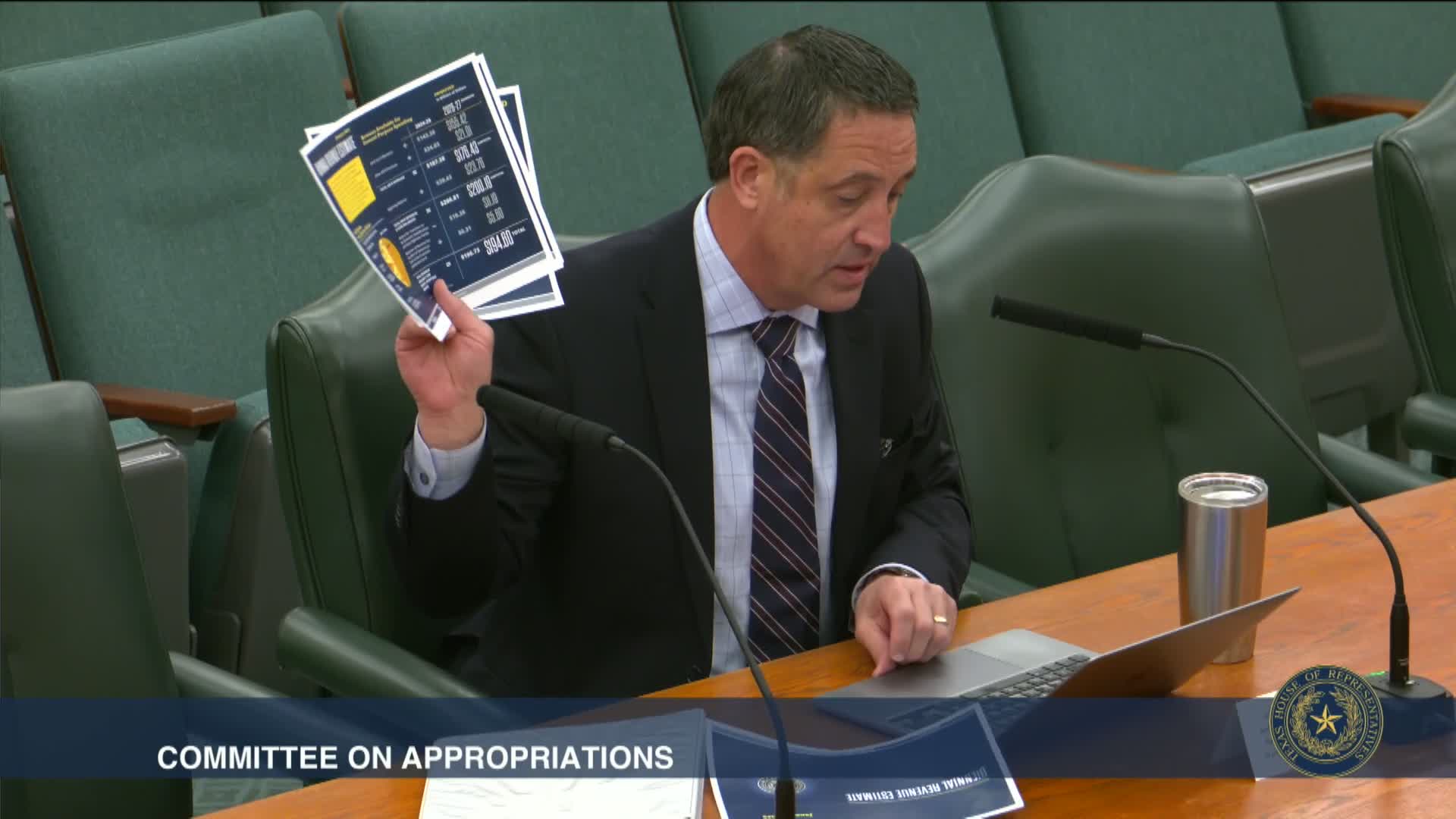Texas Comptroller outlines $194.6 billion biennial budget for 2627 with conservatism focus
February 18, 2025 | Committee on Appropriations, HOUSE OF REPRESENTATIVES, Legislative, Texas
This article was created by AI summarizing key points discussed. AI makes mistakes, so for full details and context, please refer to the video of the full meeting. Please report any errors so we can fix them. Report an error »

Texas lawmakers are preparing for a tighter budget in the upcoming 2026-2027 biennium, with an estimated $194.6 billion available for general purpose spending. This figure represents a 1.1% decrease from the previous biennium, reflecting a shift from the record-high revenues experienced in the wake of the COVID-19 pandemic.
The budget includes a robust ending balance of $23.8 billion, which is composed of $4.5 billion in unspent appropriations for public education and $7.33 billion from dedicated accounts that have not yet been allocated. These funds, while substantial, are earmarked for specific purposes and cannot be freely used for general budgetary needs.
The Comptroller emphasized that the current surplus is largely a result of conservative fiscal management rather than the extraordinary revenue growth seen in previous years. The Texas economy is projected to grow, but at a slower pace, influenced by higher interest rates and inflationary pressures. Sales tax remains the backbone of the state's revenue, projected to account for 59% of total tax collections in the next biennium.
Additionally, the Economic Stabilization Fund, commonly known as the rainy day fund, is expected to exceed its constitutional cap, limiting further transfers from oil and gas revenues. This raises questions about the future of the fund and its role in state budgeting, particularly as lawmakers consider whether to adjust the cap or redirect severance taxes back into general revenue.
As the legislature moves forward, discussions will focus on how to best utilize the available funds, including potential property tax relief measures. However, lawmakers are cautioned against expecting the same level of surplus in future sessions, as the current financial landscape is markedly different from the unprecedented highs of the past two years. The decisions made in the coming months will significantly impact Texas residents and the state's financial health in the years to come.
The budget includes a robust ending balance of $23.8 billion, which is composed of $4.5 billion in unspent appropriations for public education and $7.33 billion from dedicated accounts that have not yet been allocated. These funds, while substantial, are earmarked for specific purposes and cannot be freely used for general budgetary needs.
The Comptroller emphasized that the current surplus is largely a result of conservative fiscal management rather than the extraordinary revenue growth seen in previous years. The Texas economy is projected to grow, but at a slower pace, influenced by higher interest rates and inflationary pressures. Sales tax remains the backbone of the state's revenue, projected to account for 59% of total tax collections in the next biennium.
Additionally, the Economic Stabilization Fund, commonly known as the rainy day fund, is expected to exceed its constitutional cap, limiting further transfers from oil and gas revenues. This raises questions about the future of the fund and its role in state budgeting, particularly as lawmakers consider whether to adjust the cap or redirect severance taxes back into general revenue.
As the legislature moves forward, discussions will focus on how to best utilize the available funds, including potential property tax relief measures. However, lawmakers are cautioned against expecting the same level of surplus in future sessions, as the current financial landscape is markedly different from the unprecedented highs of the past two years. The decisions made in the coming months will significantly impact Texas residents and the state's financial health in the years to come.
View full meeting
This article is based on a recent meeting—watch the full video and explore the complete transcript for deeper insights into the discussion.
View full meeting
